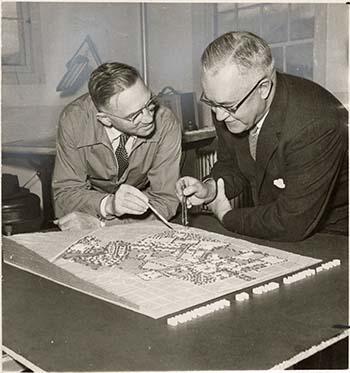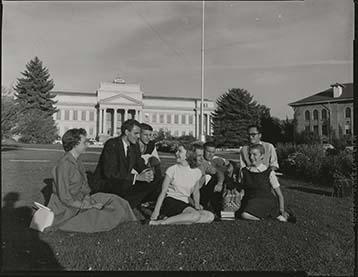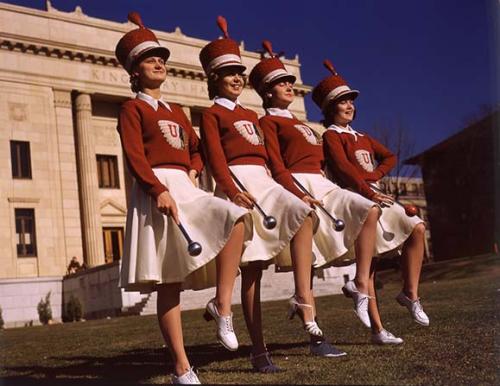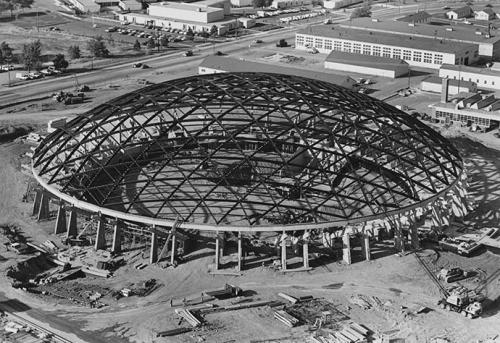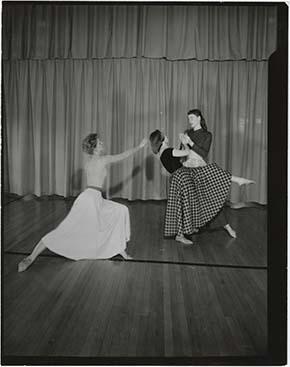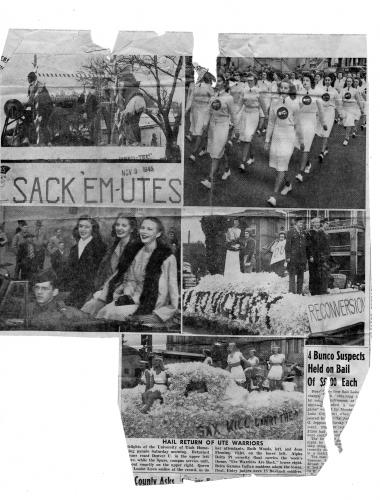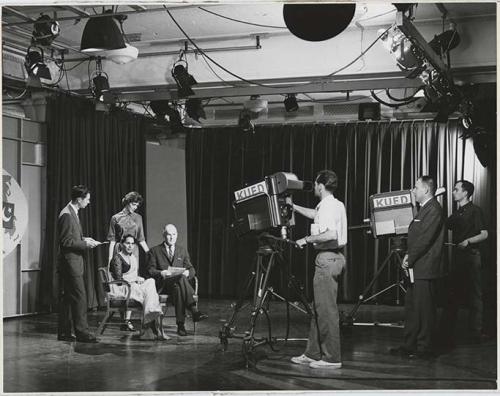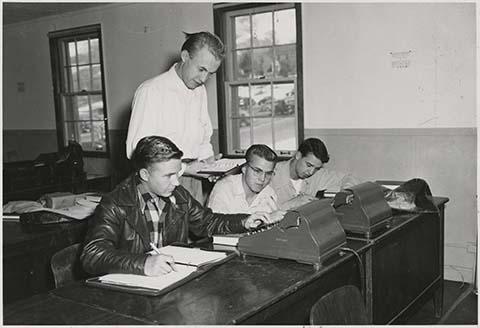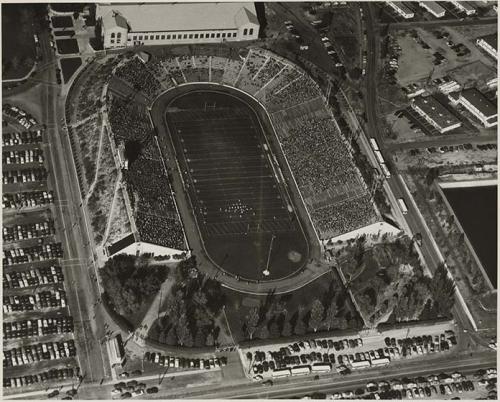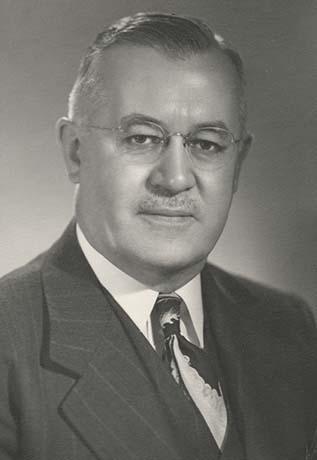Rapid Expansion, 1946-1964
In September 1945, students, faculty, and staff of the University of Utah celebrated along with the rest of the world when World War II ended. During the last year of the conflict, enrollment at the university dropped to a new low of 3,418 students; however, within a year of the end of the war, the student population doubled to 6,821. This influx of students caused severe overcrowding at the university, where construction was slowed or suspended due to the needs of national defense. Fortunately, during the war, Fort Douglas had expanded drastically, and with the war over, the temporary buildings erected to accommodate soldiers could now be turned to more peaceful purposes.
President Leroy Cowles resigned in 1946 and was replaced by A. Ray Olpin. President Olpin, who served from 1946 to 1964, presided over an explosive expansion of the University of Utah, from the growth in student population to the increase of land and new buildings on campus. He also began active recruitment of new faculty to serve the burgeoning student body. In the first year of Olpin’s presidency, the Naval Services building was completed, and the Graduate School was made an integral part of the university, with theoretical chemist Dr. Henry Eyring serving as the first dean of the Graduate School. President Olpin also initiated reorganizations of the administrative and educational structure of the university, which included the creation of a Faculty Council and renaming and recombination of the various educational programs into colleges.
In the postwar years, changes in the campus and the administration of the University of Utah came so hard and fast that it must have seemed like a blur to those who remembered the old, quiet school of the pre-war days. In 1947, the university established degrees in fine arts and nursing. The first Ph.D. ever awarded by the university was given to James Sugihara, in chemistry. More and more married students meant that Stadium Village, former barracks located east of Rice Stadium, was opened to house student families. Existing barracks in Stadium Village were supplemented by movable government buildings brought by the United States government from Topaz War Relocation Center and other wartime installations. As the military began to downsize, Fort Douglas began to shrink, and the primary benefactor was the University of Utah. Three hundred acres were deeded to the school in 1948, more than doubling the size of the campus. That same year, enrollment reached over 12,000.
1948 was a crucial year for the growth of arts education at the University of Utah: the College of Fine Arts was established, unifying studio art, music, theater, and dance under one umbrella. The same year, choreographer William F. Christensen was recruited from the San Francisco Ballet to establish a ballet department; he would go on to found Ballet West. Finally, the Utah Symphony moved onto campus in 1948 and began giving performances in Kingsbury Hall. Through the 1950s and 1960s, the University’s ballet and modern dance programs gained national recognition in this time period from the work of Christensen and Elizabeth R. Hayes. The work of distinguished alumni like Virginia Tanner, who founded Children's Dance Theatre, also bolstered the school's reputation. Yet two professors helped put the modern dance program on a national stage. In 1964, Shirley Ririe and Joan Woodbury founded Ririe-Woodbury Dance Company; within a year, the company was supported by the National Endowment for the Arts. Two years later, Virginia Tanner started her own professional modern dance company, Repertory Dance Theatre. Both companies continue to define the modern dance scene in Utah and on a national scale.
The University celebrated its centennial in 1950. That year, the first class of the College of Pharmacy graduated, and the College of Business offered an MBA for the first time. The university’s athletic department was busy during the 1950s. In 1953, under coach Jack Curtice, the football team defeated Brigham Young University in their first nationally televised football game. Besides football, men could participate in basketball, baseball, skiing, track, swimming, wrestling, and golf. The only organized team for women was a ski team, but they could enjoy intramural archery, volleyball, tennis, and basketball. Orson Spencer Hall, named for the first chancellor of the University of Deseret, opened in 1955, followed the next year by Ballif Hall, a men's residence. The university entered the television age in 1957 with the establishment of KUED, an educational TV station funded in part by a grant from the Ford Foundation. Originally broadcast from the basement of the Student Union, KUED aired local programming and programs from National Education Television and broadcast to parts of Nevada, Montana, Idaho, and Wyoming.
The “Baby Boomer” generation was reaching the point where their numbers would soon crowd the university's facilities, and President Olpin embarked on an ambitious ten-year building program in 1957 that would change the face of the campus forever. Within a decade, more than thirty buildings were completed. The first of these was the new Union building, later named in honor of President Olpin. Construction began on the Merrill Engineering building in 1958, and on Milton Bennion Hall the next year. Also in 1958, the University acquired a 35-acre plot of land near the Veterans Hospital and began construction of new married student housing.
President Olpin retired from university service in 1964, but he left a campus greatly expanded both in size and in student population. Under his leadership, the campus had quadrupled in size, and the number of buildings had also increased dramatically. Student population had gone from under 4,000 when he began his tenure, to over 12,000 by the time he left. Little could he realize, as he handed over the reins to new President James C. Fletcher, that rising tensions in the country would soon reach the cloistered halls of the campus on the East Bench of Salt Lake City.

